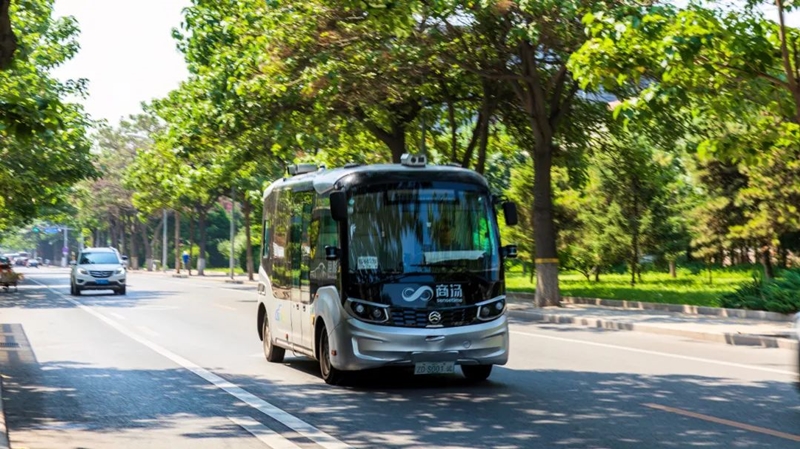Beijing E-Town enterprises promote testing of four integrated cloud-to-vehicle functions
How to overcome limitations of single-vehicle intelligent perception and give autonomous vehicles a "God's eye view"?
In Beijing E-Town, relying on the development of integrated cloud-to-vehicle functions in the Beijing High-level Autonomous Driving Demonstration Zone, SenseAuto has realized four integrated cloud-to-vehicle functions: long-range perception, blind spot vehicle reminder, economic driving, and event warning, on autonomous vehicles.

An autonomous driving vehicle developed by SenseAuto [Photo/beijingetown.com.cn]
Since June 2023, targeting autonomous passenger vehicles, SenseAuto, based on its original large-scale model technology, has refined its understanding of its four functions through data links such as "vehicle-road" and "road cloud," combined with its own practical application requirements, and completed the development of related functions and such scenarios as the precise matching of vehicle-road perception data, green wave vehicle speed guidance control, and the dynamic adjustment of vehicle routes.
With the realization of human-machine interaction page design, it opens up a "God's eye view" for autonomous vehicles, making driving safer and more efficient.
To achieve the integration of cloud-to-vehicle functions, SenseAuto's R&D team has overcome a series of technical challenges in perception fusion and decision-making. Currently, the delay from perception to decision-making of Robobus, which can conduct tests on these four functions under SenseTime Jiuying, is less than 100 milliseconds.
It not only solves the blind spot problem encountered when driving but also pushes real-time signal light information to the vehicle end "self-driving domain". Vehicles can automatically plan their driving speed according to the duration of red and green lights, achieving economic driving with "green wave passage".
While driving, Robobus can also achieve roadside event warning. For instance, if a pedestrian suddenly enters the non-motor vehicle lane while driving, this event will also be pushed to the "self-driving domain," allowing vehicles to avoid pedestrians in advance.
SenseAuto has also launched the development and testing verification of cloud-to-vehicle integrated functions in areas such as Beijing E-Town and Shanghai Lingang, relying on the demonstration zone to complete the verification and demonstration display of the four functions.

